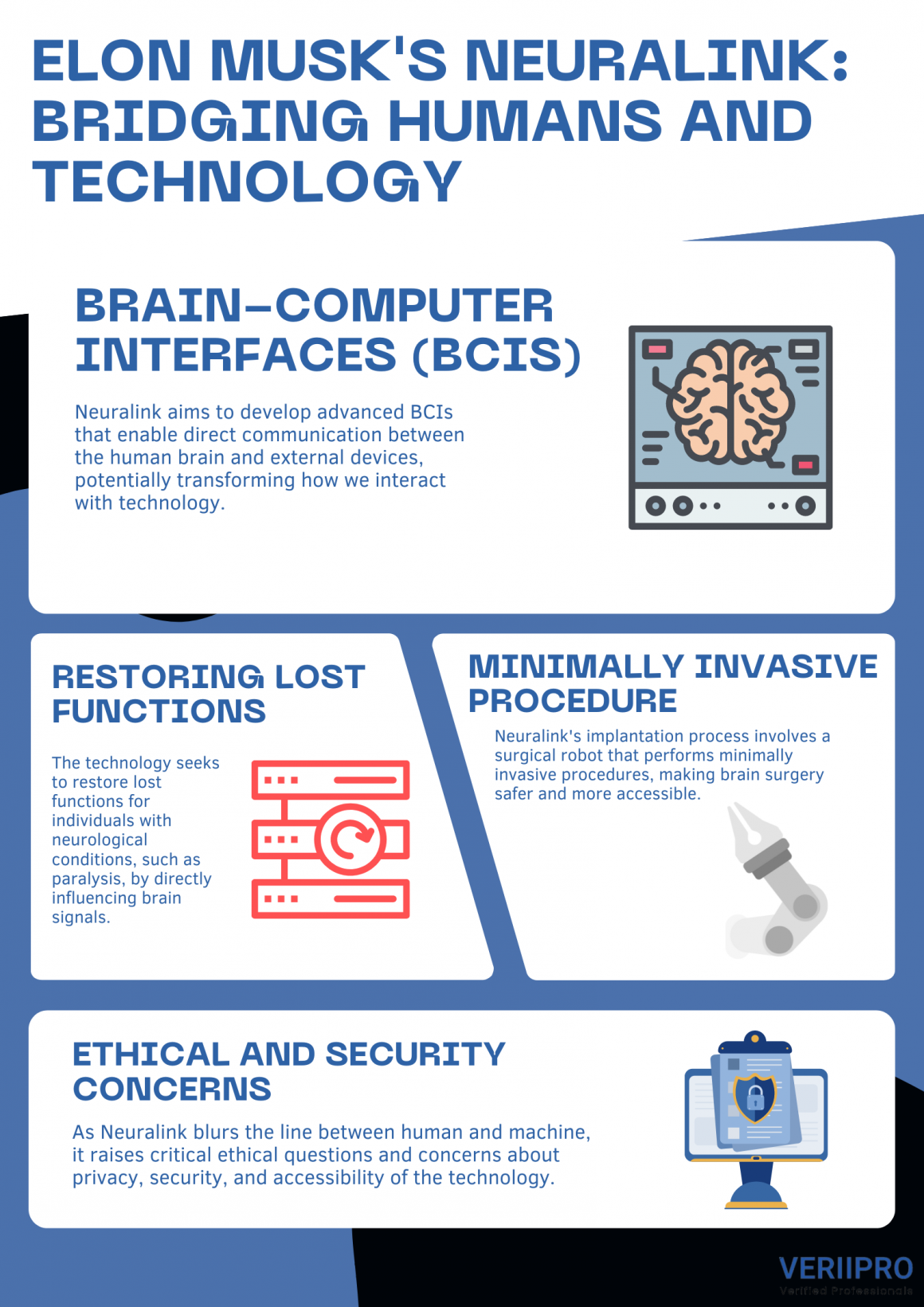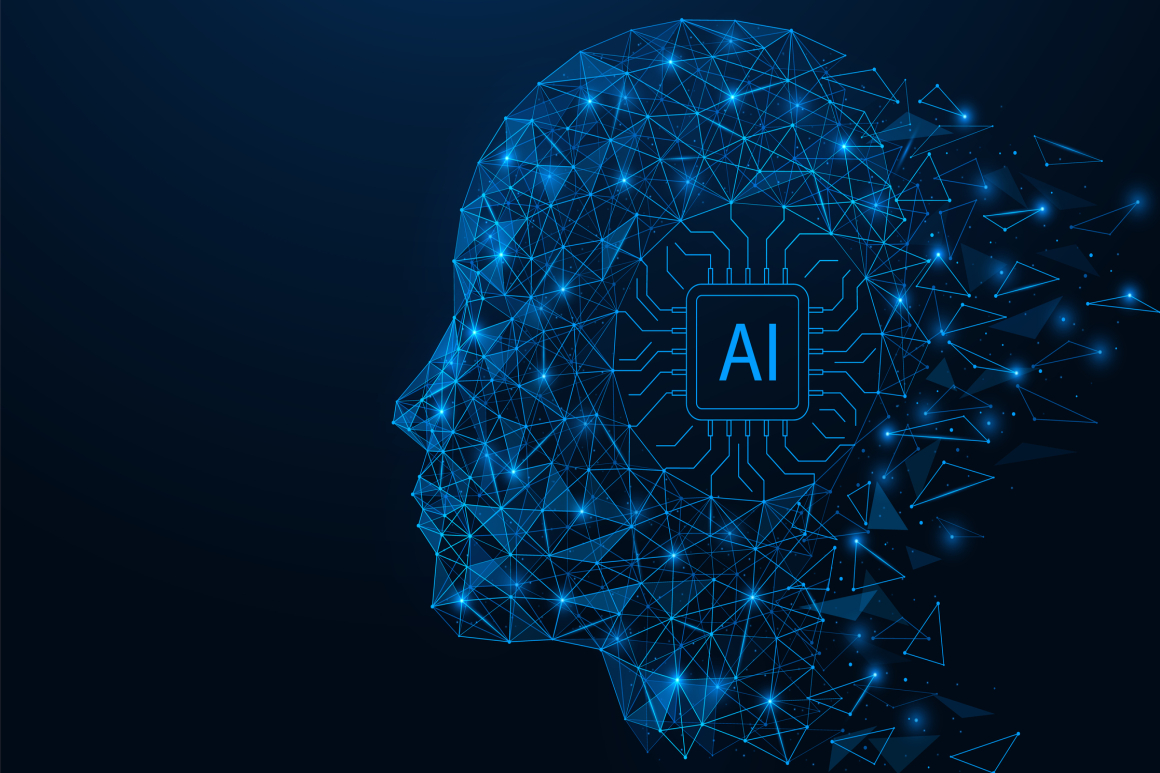Elon Musk’s Neuralink: Bridging Humans and Technology
Elon Musk is known for pushing the boundaries of innovation with ventures like Tesla and SpaceX. However, his company Neuralink, which aims to merge human brains with technology, could be one of his most transformative projects yet. Neuralink promises to revolutionize how we interact with machines and address neurological conditions. Let’s explore what Neuralink is, how it works, and the potential implications for both the tech industry and society.

What is Neuralink?
Founded in 2016, Neuralink is focused on creating brain-computer interfaces (BCIs) that allow direct communication between the brain and external devices. The company’s primary goal is to help people with neurological conditions like paralysis, but Elon Musk envisions a future where humans can enhance their cognition and stay competitive with advancing artificial intelligence (AI).
Musk’s overarching vision is that Neuralink could ultimately lead to a symbiotic relationship between humans and AI, allowing us to integrate with digital systems instead of being outpaced by them. This futuristic concept may sound like science fiction, but Musk sees it as a necessary evolution in a world increasingly dominated by AI systems.
How Neuralink Works
At the heart of Neuralink’s technology is a device called the “Link,” a coin-sized chip implanted into the skull. Connected to the Link are flexible electrodes that are inserted into the brain. These electrodes monitor brain activity and can stimulate specific areas to restore or enhance function. A surgical robot performs the implantation to ensure precision, minimizing damage to brain tissue.
The Link device communicates wirelessly with external devices such as smartphones and computers via Bluetooth. Neuralink is working to make the procedure minimally invasive, with the eventual goal of having it be as common as outpatient surgeries like LASIK.
Potential Impact on Healthcare
Neuralink’s immediate potential lies in treating neurological diseases. Traditional treatments for conditions like Parkinson’s or spinal cord injuries can only go so far, often managing symptoms rather than addressing the root cause. Neuralink aims to directly influence the brain’s signals to restore lost functions, such as movement or sensory perception.
For individuals with paralysis, Neuralink could offer the ability to control devices like computers or phones with their thoughts, providing a new level of independence. Beyond physical disabilities, Neuralink could also help address mental health disorders like depression by stimulating areas of the brain responsible for mood regulation.
Ethical Concerns and Risks
While the possibilities are exciting, Neuralink’s technology raises important ethical questions. Implanting a chip in the brain introduces concerns about privacy and security. Could someone hack into the device and manipulate brain activity? Ensuring robust cybersecurity measures will be crucial.
There’s also the question of accessibility. If Neuralink enhances cognitive abilities, who will have access to this technology? If it’s limited to the wealthy, could it exacerbate existing social inequalities?
Additionally, some are concerned about the long-term impact of merging human cognition with machines. Philosophically, it challenges the concept of human identity. If our brains are integrated with AI, where do we draw the line between human and machine?
The Role of Tech Professionals
For professionals in the tech industry, Neuralink presents numerous opportunities. Software developers may find themselves working on applications that interact directly with the brain, while cybersecurity experts will be tasked with safeguarding this highly sensitive interface. AI researchers could develop systems that work in harmony with human cognition, enabling a more seamless interaction between humans and machines.
Healthcare professionals, particularly those in neurology, could also see a major shift in treatment methods as BCIs become more mainstream. Neuralink’s potential to treat diseases or conditions previously thought untreatable could open new doors in medical innovation.
Conclusion: A New Frontier
Neuralink is still in its early stages, and while it shows enormous potential, there are significant hurdles to overcome. These include not only technical challenges but also ethical and societal ones. However, the promise of treating neurological diseases and potentially enhancing human cognition cannot be overlooked.
For tech professionals, Neuralink is a glimpse into the future of human-technology integration. Whether you’re developing AI, working in cybersecurity, or innovating in healthcare technology, Neuralink represents a new frontier. It’s crucial to stay informed about its progress as we navigate the evolving landscape of human-machine interaction.
Elon Musk’s Neuralink is pushing the boundaries of what’s possible, bridging the gap between biology and technology in ways once thought impossible. As this technology advances, it may reshape not just the tech industry but society as a whole.
Looking for your next career move? Let VeriiPro help you find the perfect job that aligns with your skills and aspirations. Our platform connects you with top employers and opportunities across the tech landscape!









